Latest Posts

Researching Carbon Fiber Reinforced Plastic Acoustic Guitars
There are traditional acoustic guitars made of wood, and now there are also those made entirely out of carbon fiber reinforced plastic (CFRP). Do these plastic guitars sound like their wooden forbearers? Guess what, you can use computer modeling to find out.
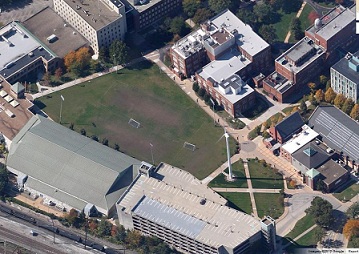
Wind Turbines in Urban Settings a Reasonable Idea
If I asked you to envision a wind turbine, odds are you’d picture a wind farm in some remote location. With good reason; that’s commonly where they are found. If you’re a student or faculty of Case Western Reserve University, on the other hand, you might think of the wind turbine you have on campus. Does it make sense to set up wind turbines in urban settings? These two researchers suggest that it does.

Efficient Heat Exchanger, it’s all in the Pipes
Nature is full of counter-intuitive phenomena; I’m fascinated by everyday examples like the one we talked about this summer, sinking bubbles in a pint of Guinness, but I have to say that engineering has its fair share of such examples too. The concept of heat exchange in coaxial pipes struck me as a student, as it showed me the relentless tinkering attitude typical of engineers wanting to optimize their design. In this kind of heat exchanger both streams, hot and […]
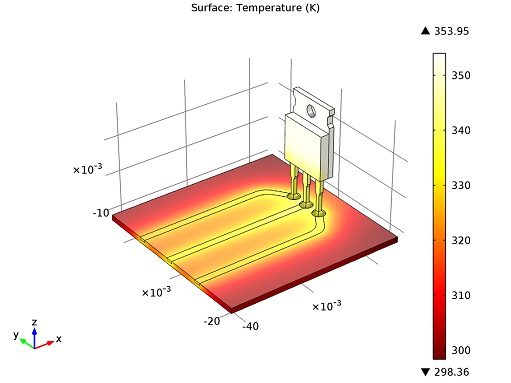
Power Transistors and Heat Transfer
Transistors are building blocks of electronic appliances, and can be found in radios, computers, and calculators, to name a few. When working with electrical systems you typically have to deal with heat transfer; electric heating is often an unwanted result of current conduction. Is a heat sink mounting necessary to keep the transistor cool, or can it manage without? Let’s have a look at power transistors from a heat transfer perspective.

Is Fracking Safe? Scientists Turn to Simulation to Investigate
Hydraulic fracturing (popularly referred to as “fracking”) is a method to increase production of oil and gas from certain types of geological formations. It has been used for decades, but recently, as the practice has increased, fracking has become a controversial topic. I will avoid taking sides in this debate, but the fact that there is a conflict implies there needs to be a deeper understanding of the process and its effects.
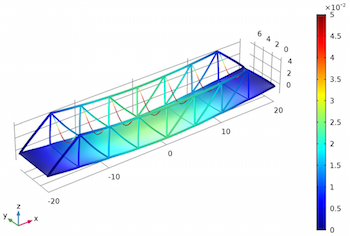
Modeling a Pratt Truss Bridge
The simple design of a Pratt truss bridge makes it useful to hold everything from pedestrians to trains. While this type of bridge is easy to construct, engineers must make sure that it lasts and is safe to use. A bridge needs to hold its own weight, support the load placed upon it, and withstand frequencies generated by wind and earthquakes. To determine whether a Pratt truss bridge design can handle these factors, we turn to simulation.

Keynote Video: Multiphysics Solutions for Advanced Vehicle R&D
Hybrid vehicles are no longer a new concept, but that does not mean research and development (R&D) has ceased. If anything, it is ramping up as demand for hybrid design optimization continues to grow. Ercan Dede from Toyota Research Institute of North America held a keynote talk at the COMSOL Conference Boston 2012 on how they are using multiphysics modeling for advanced vehicle systems R&D. If you weren’t there, you can now watch his keynote in a video format instead.

Modeling a Burning Candle, How Would You Do It?
This holiday season most of us will have burned our fair share of candles. The flickering light of candles can really enhance the ambiance and put you in festive spirits. This reminds me of an analysis of a burning candle developed by AltaSim Technologies back in 2010. So, in tune with the holiday cheer, here are some candle physics.
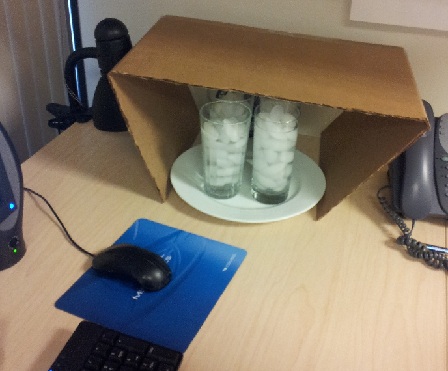
Make-shift Air Conditioner: How Engineers Can Stay Cool at Work (Maybe)
The winter here in Boston has been very mild so far. A few days I would even have liked to have the air conditioning back on. I checked in with one my colleagues to check if he was having an equally hard time staying cool, and to my surprise, he was not. Why? He had constructed a make-shift air conditioner (A/C).
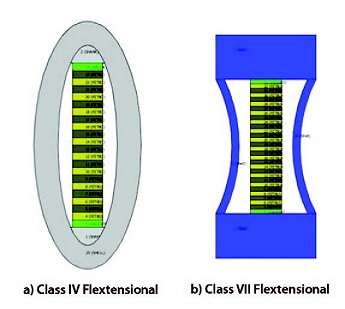
Multiphysics Simulation for Better and Faster Sonar Development
SOund NAvigation Ranging, or Sonar, has been an important part of naval warfare and since the 1950’s. Although it is a relatively simple way to locate objects, it’s the best for doing so in water, emitting sound waves and listening for echoes made by objects in the water. In today’s world of undersea warfare, the threats and the necessary responses to them are becoming more important and urgent. Sonar systems are required to detect these threats, making it necessary for […]
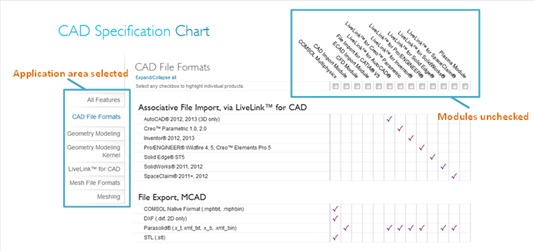
CAD and Multiphysics Interfacing Solutions
You may have seen our Specification Chart already, but did you also know we have one specifically for CAD? With the CAD Specification Chart, you can find the CAD and interfacing products that suit your specific needs.
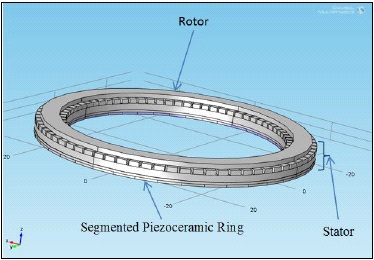
Ultrasonic Micro Motors, It’s all in the Shape
A while back, I wrote about permanent magnet generators and how they generate electricity upon being set in motion. When browsing the papers from our conference in Bangalore, one on the topic of ultrasonic micro motors caught my eye. These motors are electromechanical in nature and instead initiate motion with the application of an electric voltage. Furthermore, these motors are miniaturized to fit a micro-scale environment.

Specification Chart Uncovers Solutions to Your Engineering Problems
It should be as easy as possible to find the tools you need in the COMSOL® software so that you can spend more time using it to understand, predict, and optimize your engineering designs. This is where the Specification Chart comes in.
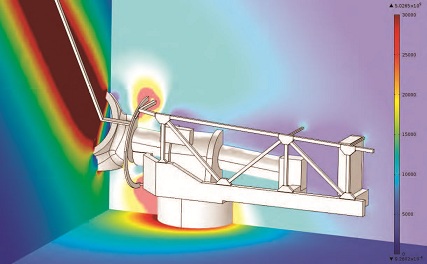
Lightning-Proof Wind Turbines
Here’s a story we’ve all heard before: due to the inefficient nature and inevitable decline of fossil fuels, alternative energy resources are becoming increasingly popular. Wind energy is a popular source of alternative energy, with wind farms sprouting up all over the world. Here’s something you may not have thought about: lightning strikes are a major problem for these wind turbines. Intuitively, places with high wind speeds also have stormy weather, and a 150 meter tall metal pole makes an […]

Keynote Video: Multiphysics Simulation for Patient Safety
The second video in our COMSOL Conference Boston 2012 keynote series features Dr. Alan Leewood’s presentation on the use of multiphysics simulation for medical safety applications. The focus of this presentation is on the safety of passive conductive implants during MRI screenings.
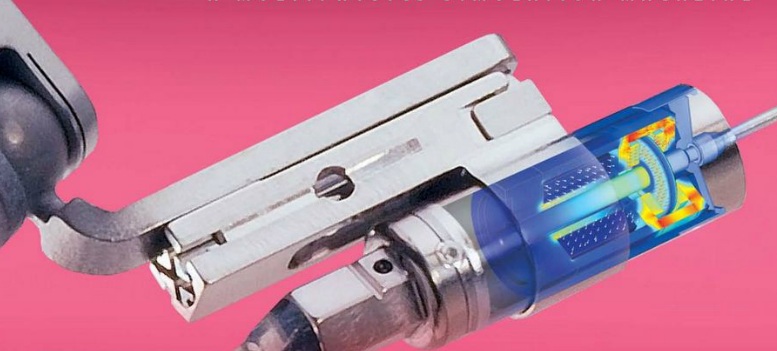
Simulation-Based Design of New Implantable Hearing Aids
Growing older is an inevitable part of life, and with it, our body slowly begins to show that. I recently started wearing eye glasses because my eyesight is weakening. It’s a little unnerving, but I am comforted by the ever-improving technology being produced. My hearing is still fully intact, but the same cannot be said for 17% (36 million) of American adults who report some degree of hearing loss. In most cases, regular hearing aids are sufficient in treating hearing […]

First Keynote Video Takes Us to Babel
One of the differences between this year’s COMSOL Conference, and previous years’, is that this year we filmed a lot of it. During the next few weeks we will be publishing some of these videos for those that were there, to enjoy it once again, and for those that weren’t to get a taste of what went on. To kick these all off, I’m proud to present the first keynote video, which takes us to Babel.

Proprietary Code or Off-the-Shelf?
Many engineers and scientists have worked in their chosen application areas for many years. It is not unusual that their first models consisted of a few lines of code that they wrote themselves. Or, the application was so specific that the engineer was forced to write code, as none of the commercial simulation packages available could handle their unique application. Then there’s the COMSOL Multiphysics® software, which enables you to enter your own equations. What’s the best option?
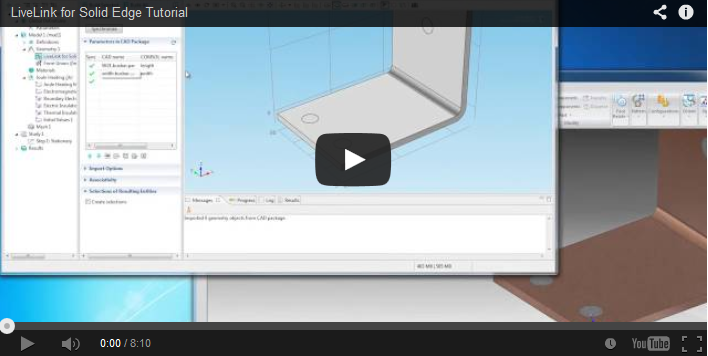
New Product Video Tutorial: LiveLink™ for Solid Edge®
With the latest COMSOL release, Version 4.3a, comes new CAD interoperability. We are delighted to introduce LiveLink™ for Solid Edge® seamless associativity between Siemens’ CAD experience and COMSOL’s multiphysics simulation software. A LiveLink™ for Solid Edge® video tutorial demonstrates this integration, and gives you a leg up in your design modeling. In this video, the three main features to help you design, optimize, and troubleshoot your geometries are demonstrated.
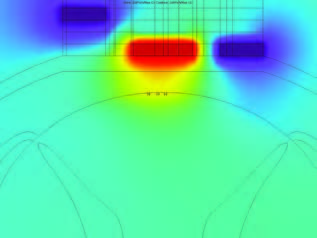
Modeling Scar Effects on Electrical Spinal Cord Stimulation
Spinal cord stimulation (SCS) is a treatment for chronic back pain that has been around for over 40 years. It involves implanting electrodes that apply electric potentials directly to the spine, interfering with the human pain signaling circuitry. The body attempts to send pain signals to the brain, but the electrodes act as a barrier preventing the signals from reaching the brain. Although an overall successful method for treating back pain, researchers have been improving on the design since the […]
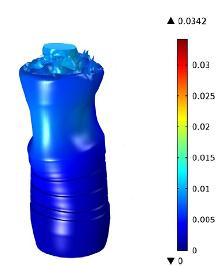
Triple Bottom Line: Innovating Bottled Water
Reducing the amount of plastic used in the production of bottled water would both help companies save on packaging costs and be more sustainable. That seems easy enough, until you consider the fact that during storage and transportation, the bottles are stacked on top of one another. With a lot of bottles comes a lot of mechanical load. How can companies reduce the amount of plastic without compromising the structure of the bottles?

Thank You for Attending the COMSOL Conference Bangalore 2012
On November 2-3 the COMSOL conference made its stop in Bangalore, India. This two-day event hosted eminent keynote speakers, user presentations, minicourses, poster sessions, and finally closed with an awards ceremony. Here’s a re-cap of the highlights of the COMSOL Conference Bangalore 2012:

Microwave Imaging for Breast Cancer Detection
Last month was Breast Cancer Awareness Month (BCAM). In many parts of the world walks were coordinated to fundraise for breast cancer research, and here in the U.S. it also meant NFL football players donned pink gear throughout the month. It was only fitting then, that a poster was presented on the topic at our conference in Boston. The research presented there explores a new method for detecting breast tumors.

Now Live: COMSOL Conference User Presentations
I know many of you have been wondering when the user presentations from this year’s COMSOL Conference would be published. Today we get to tell you that the presentation slides, papers, and posters are now available online. And as you will see, it is quite the collection too. The COMSOL Conference User Presentations are here.
